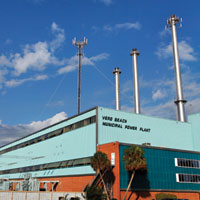 The secret behind high electric bills: It was really cold
The secret behind high electric bills: It was really cold
Vero Beach Electric customers cranked up the heat last January after being assured the city had signed on to its new, cheaper deal with the Orlando Utilities Commission. Then the whopping bills came in February.
Recently, another set of whopping bills hit mailboxes for this past December, with at least some residents claiming they were the biggest they’ve ever had.
A peek at the weather archives might explain why.
January 2010’s cold snap resulted in fish kills and stunned turtles as well as stunned ratepayers. That month, the low was in the 20s a total of two days, in the 30s for 11 days. Temps crept down into the 40s on seven days. On 20 days, the low was under 50 degrees. Another six days had lows under 60.
In December, the mercury plummeted into the 20s on four days. Temperatures hovered in the 30s for seven days and in the 40s for 16 days. That’s a total of 27 days of the month when most people in Vero turned on the heat.
Ratepayers complained that their winter electric bills are higher -- three, four or even five times higher -- than their highest bills over the summer when air conditioners run 24/7. Is that possible?
“Electric resistance heat draws 3 to 4 times as much energy per hour as does a normal cooling system,” said Acting Electric Utility Director John Lee.
For a family living in a 3,500-square-foot home with two zone heating, it could cost $30 per day or more just to run the heat. If the heat was turned on nearly every day, the tally could be close to $1,000 just for taking the chill off the house.
Combined with the extra cooking that takes place over the holidays, lighted Christmas decorations, and extra hot water used by guests, this all adds up to the shocking electric bills some barrier island residents received.
Lee said the city logged 257 calls questioning bills that hit in January and requesting a re-read of meters.
“The relatively high number of high bill inquiries is not unusual,” Lee said. “We received about 230 during the very cold weather last year and we normally receive about 180 to 200 after the first month of hot weather each summer. It is probably the dramatic change in the size of the bill that causes the customers to ask why.”
Unfortunately, 99 percent of the bills were a correct reflection of the kilowatt usage, according to the city.
“During any meter reading cycle, we find about 1 % of the reads need to be questioned,” Lee said.
“Normally, most reading errors are caught before billing so finding a meter reading error after the bills have been delivered is rare,” Lee said. “Usually no more than 3 or 4 per month.”








